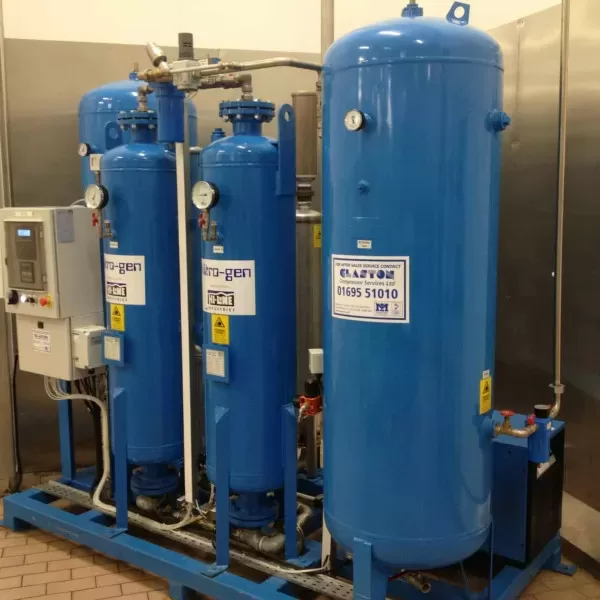Like all consumable materials, nitrogen is an ongoing cost that must be included in the budget of any laser cutter. It can account for as much as 60% of the total laser running costs. Several cylinders of gas can be used every hour that the machine runs, and depending on the size of the job shop and number of lasers running at once, the expense quickly builds. For the job shop attempting to minimize expenses, what can be done?
Some may find success using pressurized shop air (the air we breathe is roughly 80% nitrogen and 20% oxygen), but this presents its own complications. Firstly, one must have the machinery to pressurize the air and remove moisture in the first place—job shops in arid regions may have more difficulty with this. Secondly, for job shops that frequently cut stainless steel, cutting with mixed gases will have an effect on their product. While the oxidization caused by cutting stainless steel with a small percentage of oxygen isn’t severe, it will leave a ‘stain’ on the cut edge that some customers will not accept, and will require further processing to get rid of. Even if you avoid the up-front expense of the nitrogen, it’s quite likely that you lose more money through the extra time spent on these products.
So while it’s expensive, it’s still necessary for many to have a steady supply of nitrogen. But that doesn’t mean it’s impossible to save without sacrificing quality. Nitrogen generators are becoming an increasingly attractive option for many reasons. Depending on the current price of nitrogen being sold to your competitors, you can be looking at long-term savings between 40-80%. Downtime also decreases—there’s no wait time on deliveries or danger of unexpected delays in the supply line, helping you be in control and self-sufficient. For environmentally-minded fabricators, there’s even ease of mind knowing that your carbon footprint has been reduced from fewer off-site deliveries.
The other option for fabricators with high production demands is to install large bulk storage tanks for liquid nitrogen. These can be refilled periodically, and over time are more economical than regular smaller deliveries of liquid nitrogen, and even more so than cylinders of gas nitrogen. On the other hand, bulk storage can be costly in rental and maintenance, is at the mercy of supply, and has the same issue of off-gassing as smaller containers of liquid. Liquid nitrogen will continually convert itself to gas and vent off, consuming upwards of 20% of your bought supply. Given a long enough delay between usage, your supply may run out entirely without being utilized. It’s therefore important to purchase amounts fairly close to what you’re reasonably going to be able to use in order to minimize this expense.
Every traditional purchase should be examined in order to streamline your business costs. When it comes to nitrogen tanks and cylinders, these purchases are contractual and look to the long-term, but their fluctuating prices, high wastage and unstable supply are to the fabricator’s detriment, creating future risk with your expenditure. Next time you look over your nitrogen expenses, consider whether a change in supply method now could benefit your business in the future with better pricing and a controlled supply.




